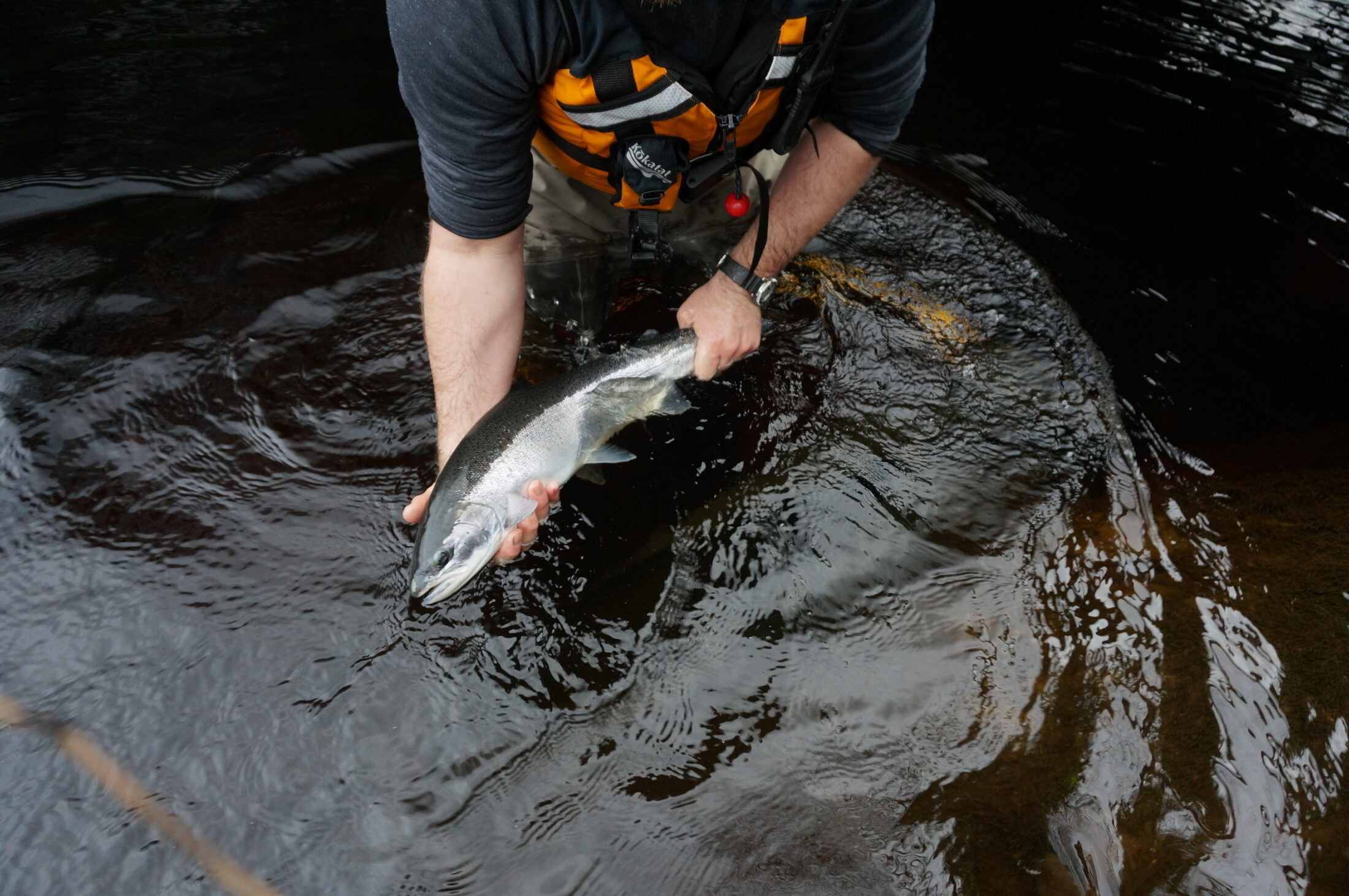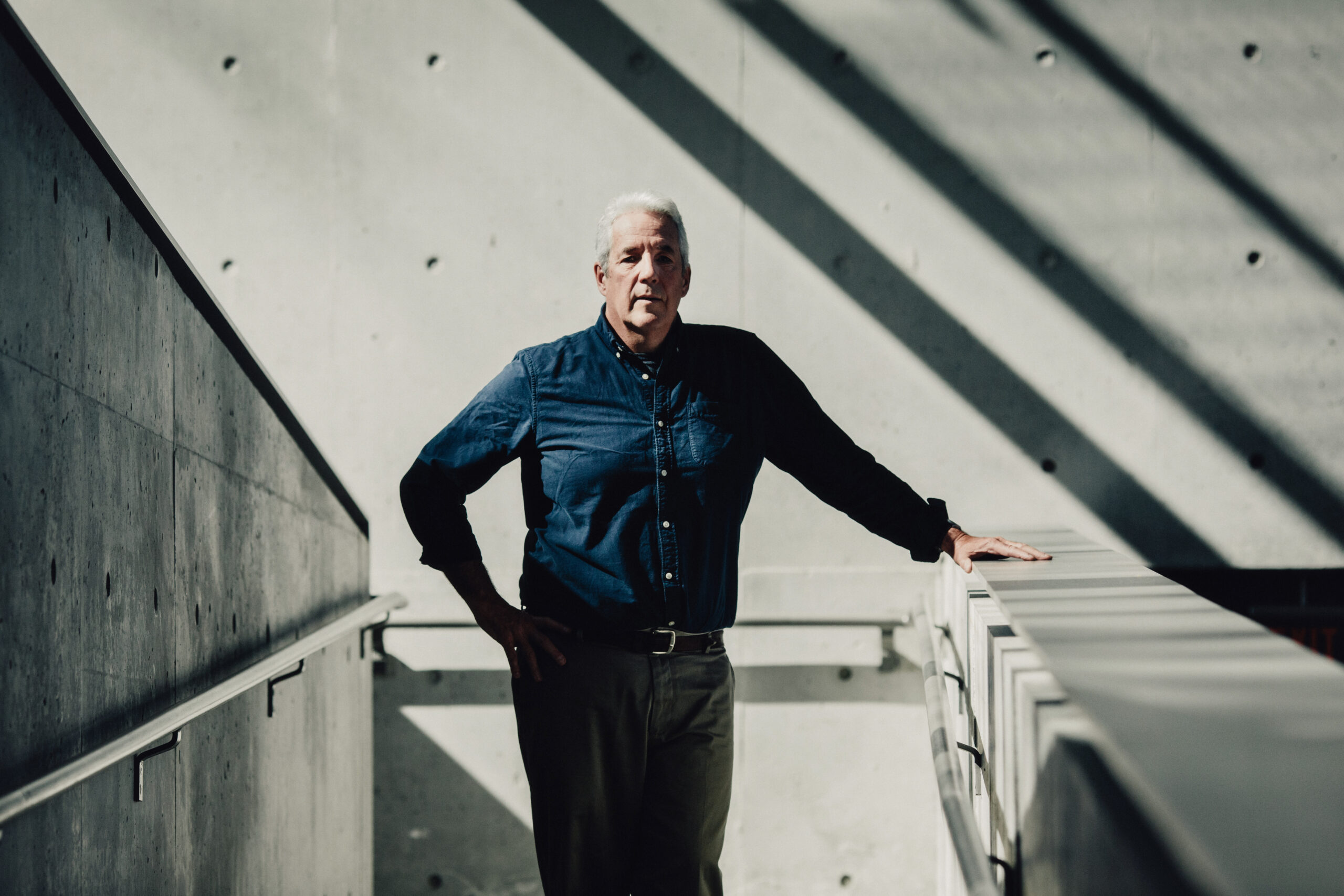
The site of an infamous B.C. mining disaster could get even bigger. This First Nation is going to court — and ‘won’t back down’
Xatśūll First Nation is challenging B.C.’s approval of Mount Polley mine’s tailings dam raising. Indigenous...
Fisheries and Oceans Canada (DFO) watered down a scientific report to downplay threats to endangered Thompson and Chilcotin steelhead, documents obtained by the B.C. Wildlife Federation through access to information legislation reveal.
The nearly 2,700 pages of internal documents and emails show DFO scientists, as well as their provincial and independent counterparts, were caught off guard by edits the DFO Assistant Deputy Minister’s Office made to a report regarding the potential for the two declining steelhead populations in B.C.’s Fraser River watershed to receive special protections.
The report, which was meant to inform the DFO’s decision on whether to list Thompson and Chilcotin steelhead under the federal Species at Risk Act, was weakened to downplay the risks to steelhead, to the dismay of scientists involved in the process, the documents show. (The documents in their entirety are available at these links: Part 1, Part 2, Part 3)
The emails shed new light on a July 2019 decision made by Jonathan Wilkinson, then minister of Fisheries and Oceans, to not list the steelhead populations under the act, which would have given policy makers more leverage to manage for their decline in the Fraser River.
In October 2018, a month before the altered report was eventually published, the chair of the Canada Science Advisory Secretariat’s steelhead review warned the changed document was undermining the scientific credibility of the process. The secretariat conducts peer review of science advice for DFO.
“The ongoing involvement by people who were not part of the process, who have not been involved in the development of the materials or the advice, continues to compromise our ability to meet the deadlines as well as the scientific integrity of the process,” Sean MacConnachie, a DFO scientist who advises on the species at risk program, wrote in an email contained within the released documents.
One month later, after the report was made public, Jennifer Davis, provincial director of fish and aquatic habitat for the B.C. Ministry of Forests, warned DFO the altered wording in the report did not reflect the scientific consensus. But DFO did not act on these concerns.
The published report summary, Davis wrote, was “inconsistent” with the joint science team’s conclusion that immediate action was needed to reduce steelhead mortality, including changes to commercial fisheries, in order to give the fish a chance at recovery.
“The report, as published, downplays the threats associated with salmon fisheries bycatch mortality,” members of a B.C. science team warned in another email.
Thompson and Chilcotin steelhead spawn in tributaries of the interior Fraser River, where both species have experienced population declines of about 80 per cent over the past two decades. Last year’s numbers were the second-lowest on record for Thompson steelhead and third-lowest for Chilcotin, with 180 Thompson steelhead and 81 Chilcotin counted. In 2019 numbers showed the lowest returns for both populations in history.
Steelhead are trout that behave much like salmon and share a similar pink meat. Like salmon, steelhead are anadromous, meaning they hatch in fresh water, live in the ocean as adults and return to where they hatched to spawn. Unlike salmon, which die after they spawn, it’s possible for steelhead to spawn more than once and live to a ripe old age of about eight years (though some exceptional fish may survive more than 10 years).
Jesse Zeman, director of fish and wildlife restoration for the B.C. Wildlife Federation, said the fact scientists had their findings unilaterally altered by DFO officials raises questions about the process of getting species protected under the Species At Risk Act.
“If DFO cannot do this [process] with integrity and do it properly based on science, this will domino into all of the runs of salmon that are headed for endangered status,” he said.
“The Fraser is dying … If DFO will edit the science, we have no hope.”
In 2020, the Fraser River experienced historic lows in the sockeye salmon run. In November of 2020, the Committee on the Status of Endangered Wildlife in Canada listed more than half of the 12 chinook salmon populations in southern B.C. as endangered, threatened or of special concern. Only one population is not at risk, while three populations could not be assessed due to deficient data.
Zeman said he believes the trouble in getting fish listed under the Species at Risk Act stems from problems with management at DFO and not scientists, who he believes are “not listened to.”
He added that DFO still hasn’t made the Canada Science Advisory Secretariat’s steelhead peer review proceedings public, even years later.
In an emailed statement, a DFO spokesperson said Thompson and Chilcotin steelhead will be considered for listing under the Species At Risk Act again, because the Committee on the Status of Endangered Wildlife in Canada has reassessed the populations as endangered.
The spokesperson also said DFO plans to continue rolling closures for salmon fisheries this year. DFO is also considering additional measures to reduce steelhead bycatch, which will be released in early July within the Salmon Integrated Fisheries Management Plan.
“The Government of Canada understands the importance of these two steelhead trout populations to British Columbians and shares the concern about the decline in steelhead trout returns,” the spokesperson said.

Thompson and Chilcotin steelhead migrate in the Fraser River at the same time as Pink and Chum salmon, two commercially valuable fish. Listing Fraser River steelhead populations under the Species At Risk Act would likely mean curtailing those salmon fisheries.
The problem is steelhead end up as bycatch of the major salmon fisheries, which makes it less likely as many will survive and return to spawn, Zeman said.
Even if just 10 fish are bycatch, that could be a tenth of the spawners returning that year, he pointed out.
“When numbers are that low, every fish counts,” he said.
The documents corroborate assertions made by the B.C. government in 2019 that DFO was burying scientists’ concerns about the endangered steelhead. B.C.’s then-deputy minister of the environment, Mark Zacharias, wrote a letter to his federal counterpart in which he said DFO changed conclusions in the report to “support status-quo commercial salmon harvesting.”
The newly released documents reveal how these conclusions were changed. Notably, the original report summary recommended that “the lowest possible allowable harm should be permitted at this time” and that “ … exploitation be reduced below current levels of exploitation wherever possible.” That was changed by DFO to read “allowable harm should not be permitted to exceed current levels.”
“Allowable harm should not be permitted to exceed current levels?” asked one scientist in an email.
“So I guess the [report] concludes that continued decline in the abundance of the [Designatable Units] is OK because that is what is happening under current exploitation rates?”
A DFO scientist agreed it was a “big change from the language that was settled on at the meeting.”
Another DFO biologist, Scott Decker, said that the body of the report was “much more in agreement” with the science team’s assessment, but the summary allows the reader to conclude current exploitation rates are acceptable and that “exploitation doesn’t really have much influence on recovery probabilities.”
Davis also emphasized how important it was to acknowledge the impact of fisheries on steelhead.
“With two years of lowest-ever returns, what we have been doing isn’t working … we need to immediately take actions to stem any further declines to the extremely low numbers in order to have a chance to recover,” Davis wrote in a 2018 email.
But further protections didn’t come, and another two years of record-low returns followed.

In 2019, DFO decided not to protect the Thompson and Chilcotin populations under the Species At Risk Act, despite the recommendation to do so by the Committee on the Status of Endangered Wildlife in Canada.
In its decision, DFO estimated listing the species would lead to a $90.7 million loss in profit for commercial fisheries, Indigenous commercial fisheries and seafood processing over 20 years, plus an additional $16.2 million in losses for the recreational fishing sector over the same period.
Eric Taylor, professor with the University of British Columbia’s Department of Zoology, said the federal government often emphasizes the cost of shutting down fisheries, but doesn’t measure the benefits.
“Maybe [scaling back fisheries] would result in higher returns for steelhead trout in the Central Interior. Maybe it can resuscitate the Interior fishery. Maybe it could lead to longer-term benefits,” said Taylor, who served as chair of the Committee on the Status of Endangered Wildlife in Canada when it recommended listing Thompson and Chilcotin steelhead under the Species At Risk Act.
Another part of DFO’s rationale for not listing the species under the act was the fact the province and the federal government share management responsibilities of Thompson and Chilcotin steelhead. Fish could be protected under existing provincial and federal legislation outside of the special provisions of the act, DFO said.

DFO launched a Steelhead Action Plan in partnership with the province in 2019, but just a few weeks after it was released, fisheries were opened and not much has changed since, B.C. Wildlife Federation’s Zeman said.
Zeman said DFO is prioritizing fisheries over fish conservation, a view echoed by Taylor.
“I continue to be shocked by the deliberate mismanagement,” Taylor said.
Taylor said because of its conflicted mandate to advocate for fisheries and conserve fish at the same time, DFO “cannot be objective.”
“DFO needs to be broken up, and have some responsibility taken away,” he said. “Aquaculture should be in agriculture.”
“That doesn’t mean tweaking. The entire ministry needs to be reconfigured.”
Taylor also emphasized the intrinsic value of protecting these fish. Steelhead are unique, and many people value them simply for existing, he said.
“When you drive through the landscape, you can’t help but think of the rivers and the fish,” he said. “It’s like polar bears in the Arctic… they reflect the landscape, and people’s connection with the landscape.”
“They are not just any other fish.”
Updated May 17, 2021, at 11:38 a.m. PT to include comment from DFO.
Updated May 19, 2021, at 4:12 p.m. PT: This story was updated to clarify that steelhead do not reside in the Fraser River as previously written, but rather spawn in the tributaries of the interior Fraser River. As a friendly scientist pointed out, Thompson and Chilcotin steelhead technically reside in the Thompson and Chilcotin Rivers, the Fraser River and the ocean throughout their lives.
Get the inside scoop on The Narwhal’s environment and climate reporting by signing up for our free newsletter. When I visited my reserve, Moose Factory,...
Continue reading
Xatśūll First Nation is challenging B.C.’s approval of Mount Polley mine’s tailings dam raising. Indigenous...

As the top candidates for Canada’s next prime minister promise swift, major expansions of mining...

Financial regulators hit pause this week on a years-long effort to force corporations to be...

